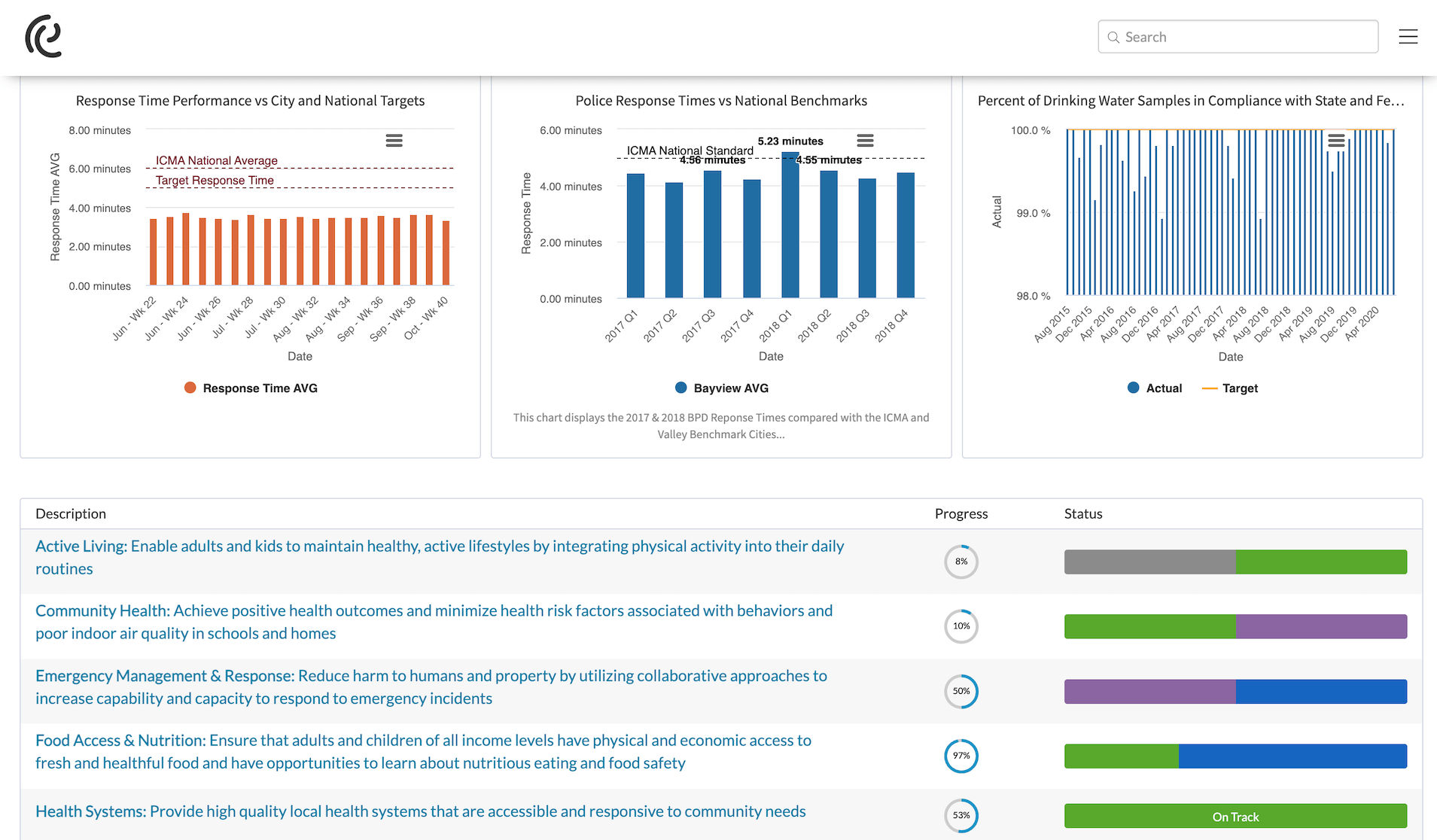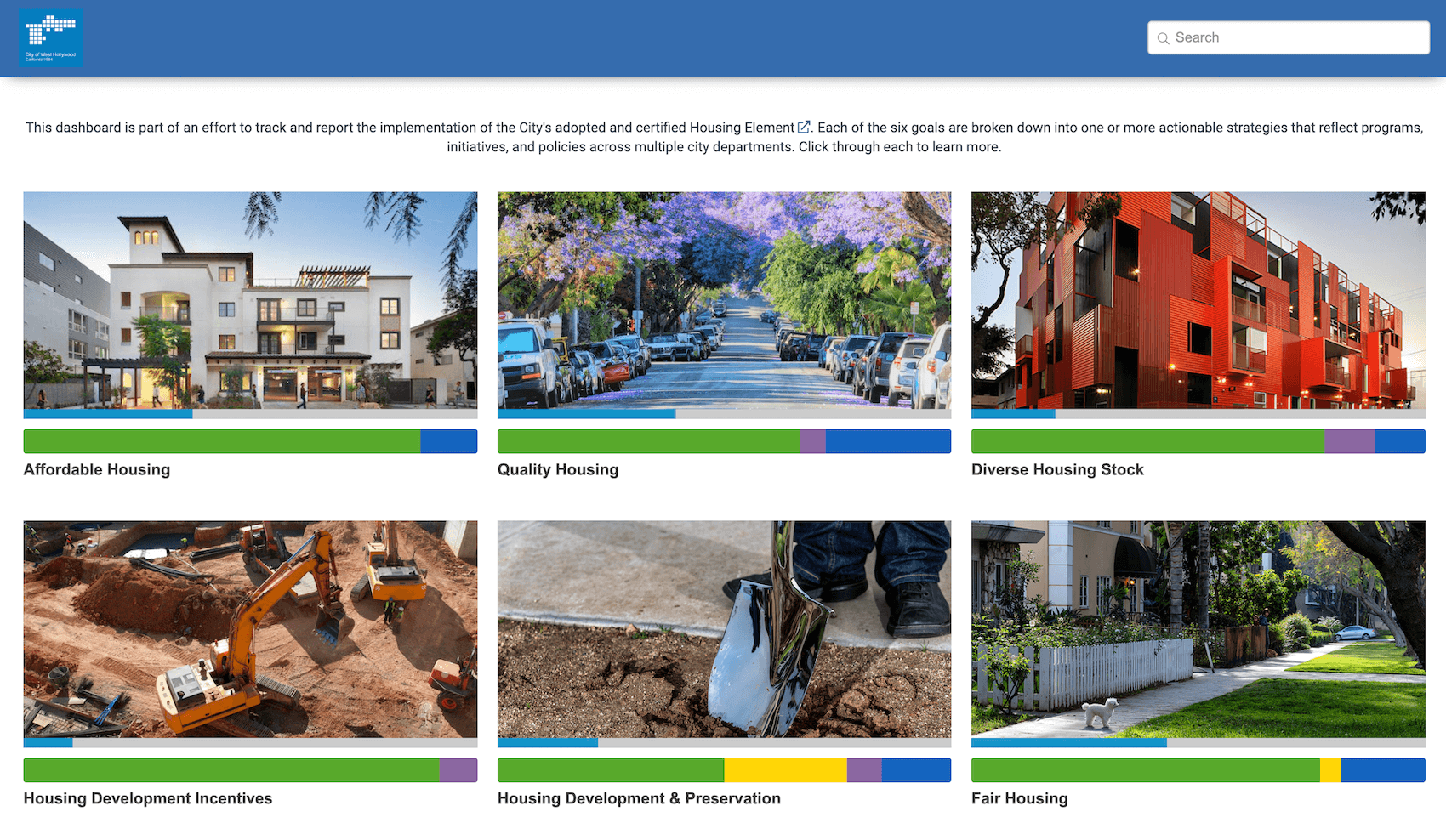
Contents
Fall is coming, and you know what that means … kids are going back to school, temperatures are going to drop, and that means there are going to be surges of COVID-19, the flu, the cold, and all manner of other public health risks. A community health strategic plan is a proactive measure to mitigate the effects of these surges; by having a plan in place, your local government and/or your public health department can be sure that you have the measures necessary to keep your community healthy and happy.
For all public sector organizations—from schools to local governments—integrating community health into their strategic plan is a vital step towards creating a sustainable and thriving environment. In this blog post, we’ll explore three key ways strategic planning in healthcare can promote and improve community health.
1. Investing in infrastructure and facilities
The infrastructure and facilities a local government invests in can greatly impact community health. One of the foundational pillars of community health improvement is the development and maintenance of essential infrastructure and facilities. The main reason for surges getting out of hand, as we witnessed worldwide during the global onset of COVID-19, was the overflow of patients in hospitals. And the effects are still being felt: the lack of infrastructure in place for many resulted in increased levels of isolation, and increased rates of mental health struggles.
The City of Bayview, Texas, is working to improve community health with the help of strategic planning software. They’re approaching health from an infrastructure standpoint to tackle a holistic set of problems—from promoting food security, to improving emergency response infrastructure.
By properly allocating resources to create and enhance spaces that facilitate physical activity, social interaction, and access to other essential health services, a public health strategic plan can alleviate the strain on emergency medical systems. A strong public health strategic plan is one that considers health as a holistic effort, rather than one specific investment. Here are some facilities that should be considered as part of a holistic community health strategic plan:
- Healthcare Facilities: A public health strategic plan should focus on improving overall healthcare infrastructure. Accessible, well-equipped healthcare facilities ensure that community members can receive timely medical attention, preventive care, and health education. By supporting clinics, hospitals, and community health centers, your plan contributes to reducing healthcare disparities and promoting overall well-being.
- Parks and Recreation Areas: Well designed outdoor spaces are a critical part of community public health. Not only do well-designed outdoor spaces lower the risk of transmission of COVID-19 and other transmittable illnesses, they also support mental well-being and less isolation and loneliness, particularly for vulnerable groups and seniors, by promoting community gathering in a way that can more easily comply with public health regulations. Designating public areas with human beings in mind, and making this a part of a public health action, can include ensuring public spaces have places to rest, spots to warm up (or cool down!), and relax.
- Improving Transportation: The way in which improved transportation infrastructure in a city improves community health could be its own post, but I’ll keep it brief. When we are talking about public health, we are really talking about the ways in which our policies promote—or don’t promote—communal well being. One thing that creates a crisis of hospital overflow is crowded emergency rooms: in the USA, traffic accidents are a leading cause of death and one of the main reasons for emergency room visits (and therefore, contributing to hospital overflow), but this is not typically discussed as a public health emergency. Investing in accessible, efficient, effective, well-ventilated public transit, and friendlier infrastructure for walking, cycling, and other forms of active transportation not only reduces carbon emissions, but also encourages healthier, safer lifestyles, and helps to lower hospital overflow. Incorporating bike lanes, pedestrian-friendly pathways, and public transportation systems into your strategic plan can lead to reduced traffic congestion, and decreased accidents.
2. Outreach and education programming
An informed community is an empowered one. By making public health an integrated part of your strategic plan, and by incorporating education and outreach programs, you can enhance community health by raising awareness, reducing vaccine hesitancy, promoting healthy behaviors, and equipping individuals with the knowledge to make informed decisions about their well-being. And outreach doesn’t just mean to the public; it also means to other departments, to communicate with them the importance of a community health strategic plan.
Kent County, Michigan, is incorporating education and outreach in their public health strategic plan as part of their sophisticated approach to tackling the social determinants of public health. They are working on education in schools, promoting outreach, and tackling the root causes of health crises with their Health in All Policies plan (HAiP).
Here are some ways your strategic plan can incorporate public health outreach:
- Health Workshops and Seminars: Organizing workshops and seminars on various health topics, from nutrition, to vaccine information, to fitness and stress management, can empower community members to take control of their health and ask for help. Workshops and seminars foster a culture of learning and community, which keeps people active and engaged in the well-being of others and themselves.
- School Collaborations: A significant portion of a community’s population comprises school-going youths. Collaborating with local schools to implement health programs can instill healthy habits from a young age—from outreach programs about proper nutrition, to the importance of exercise, and safe and reliable reproductive health information—these topics keep this population healthy, confident, and helps to give them agency at a critical time in their lives.
Social positioning in society is a major determining factor of overall health. A holistic approach to developing a strategic plan that incorporates community health recognizes the interplay between economic stability, social well-being, and overall health. Your strategic plan can make a meaningful impact by supporting initiatives that address social determinants of health.
- Unhoused Populations: Unhoused people face many health problems which are typically the result of various factors, including a lack of adequate food and shelter, increased levels of chronic stress, racism and discrimination, overall barriers to accessing health care, and not enough resources for social services. Chronic homelessness is a major stress on the body and many advocates and healthcare professionals argue it ought to be treated as a public health emergency. By ensuring unhoused people aren’t falling through the cracks, and through uplifting public health systems that work directly with these populations and the unique needs they have, a strategic plan can ensure the proper resources are allotted to promote the overall wellbeing of unhoused people.
- Affordable Housing: Adequate housing is a fundamental determinant of health. A strategic plan that incorporates affordable housing strategies that promote the availability of affordable housing options for community members. Safe and stable housing contributes to reduced stress and better overall health outcomes. The City of West Hollywood recently released their housing public dashboard, which includes rebuilding multi-family homes, and creating a rent stabilization ordinance.
—
A strategic plan can be more than a roadmap for a community—it’s a commitment to creating a better, healthier future. Public health strategic plans can be made more robust by focusing on infrastructure, outreach, and economic and social support. Your strategic plan can actively—and holistically—promote and improve community health, and make a real difference for your community. As these three approaches intertwine, they create a framework for enhancing the overall well-being of community members, fostering a healthier, happier, and more empowered society for everyone.
Get a demo of Envisio ↓
We work with high-performing healthcare and government organizations. Book a demo to learn more about how Envisio can bolster your strategic objectives and efforts!











